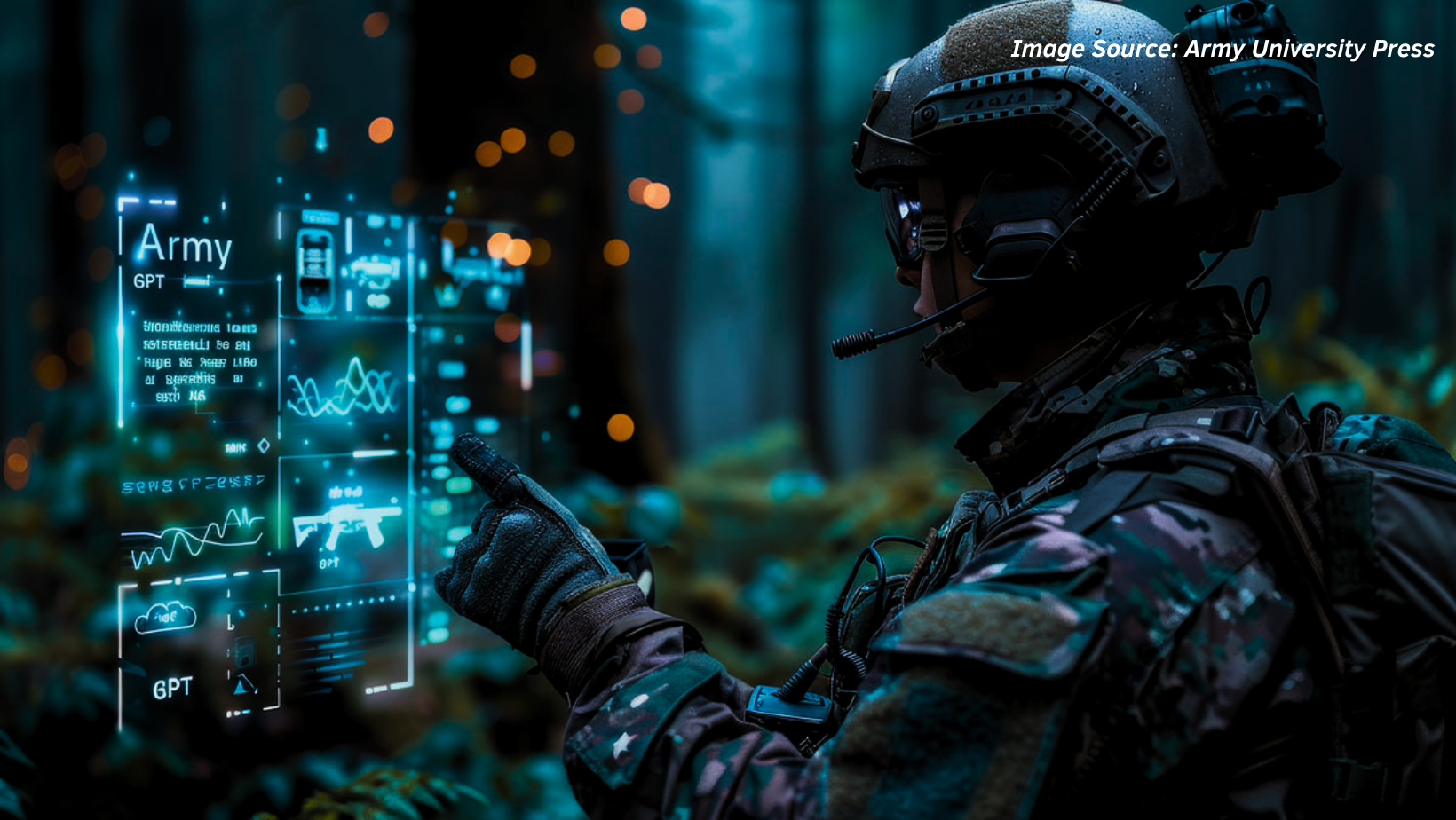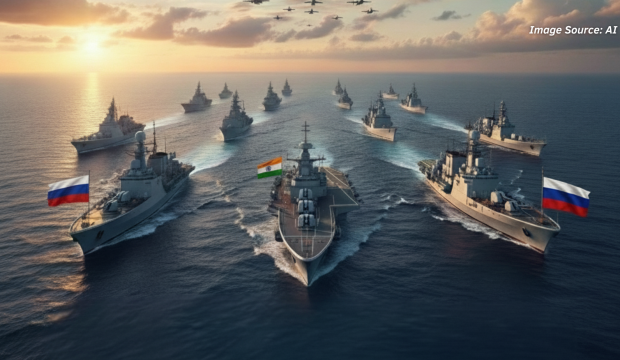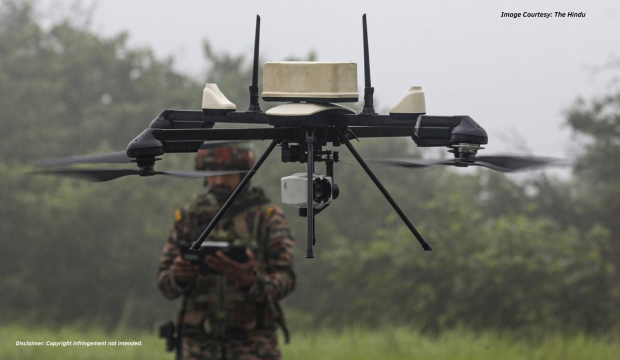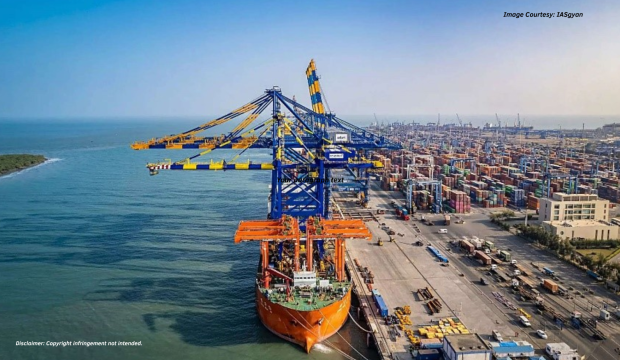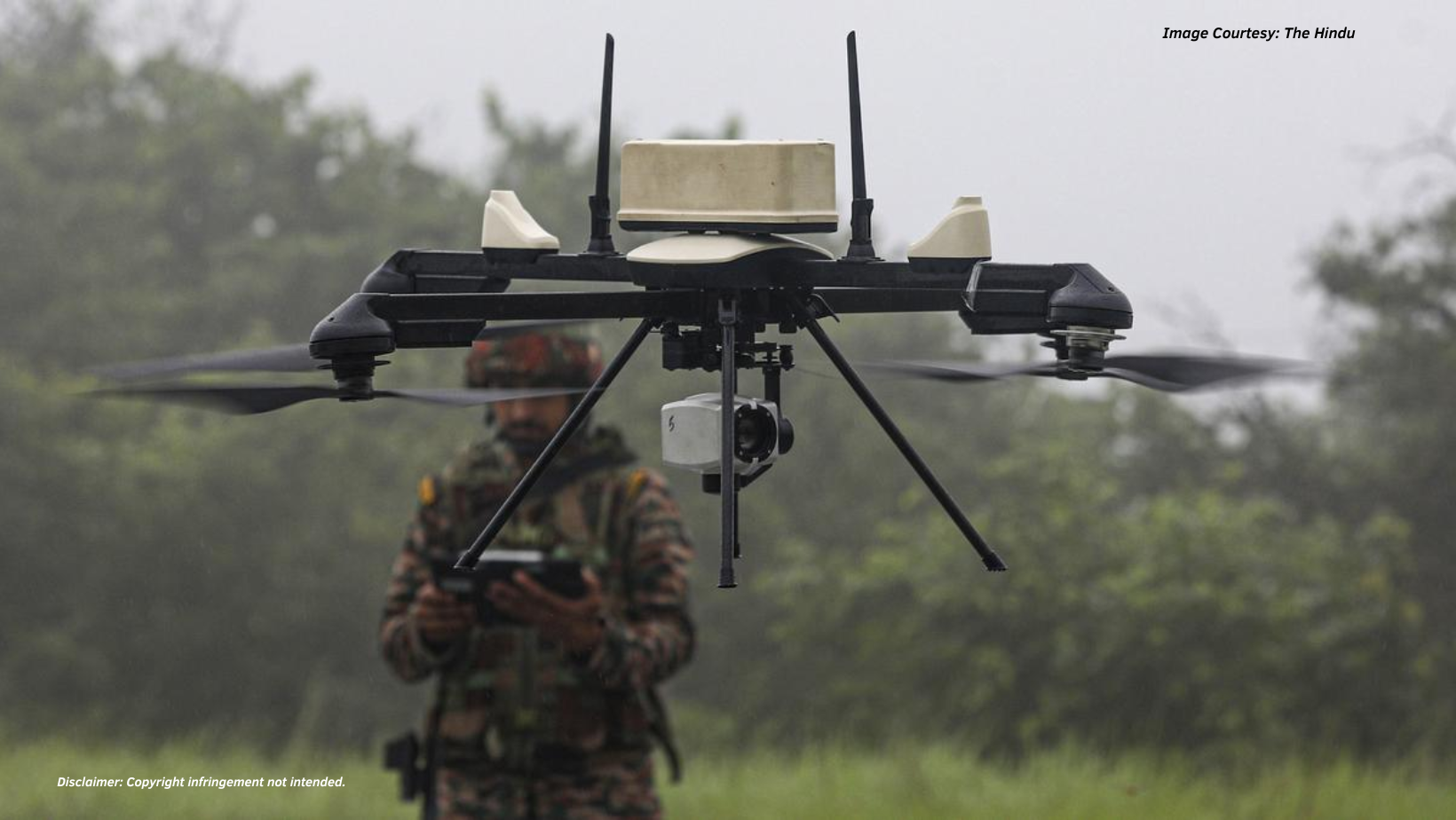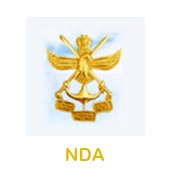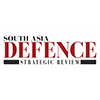Introduction
There is no denying the fact that post COVID world has been taken by the AI storm. Not a single day passes wherein, AI and its associated technologies are not in the news – for positive or negative reasons alike. Be it the traditionalists calling for control over AI and highlighting ethical and moral questions or the technologists who are thrilled at the advent of this new technology. The economists too have joined the bandwagon looking to make moolah from this new opportunity. This has left the common citizen wondering as to what is in store for him/her? How is this new technology going to impact him/her? Or has it already started impacting the lives? Whether knowingly or unknowingly, has AI already entered our lives in the form of the next video suggestions on YouTube or the recommendations on Netflix or Alexa / Siri in our vehicles?
As is the common knowledge now, it took just five days for ChatGPT to reach a million users as against two months for Instagram and 10 months for Facebook. The ChatGPT website gets about 25 million daily visits.[1] Like iPhone versions, since initial launch, Open AI has already launched numerous versions with the latest being GPT-4o (Omni) and GPT- 4 (Turbo). These versions highlight the rapidity of changes in the AI language models with each iteration further improving the quality, capability and efficiency. While ChatGPT is essentially a form of Generative AI (GenAI) which is finding traction amongst common users, other forms of AI are also making huge strides especially in the fields of medicine, business, governance and war fighting.
The employment of AI technologies in the post COVID conflicts between the armed forces across the world has increased manifold and more importantly, the rapidity of change has been so fast and so swift, it has left the strategists and the tacticians no time to be even astonished! Apart from the scale of changes, the wide range of AI applications for war fighting is truly changing the nature of warfare. Though the most visible changes are apparent in the weapon platforms however, tectonic changes are taking place in the background. The employment of AI tools for Information Warfare, Grey Zone conflicts, precision targeting, enhancing battlefield transparency and so on and so forth is humungous and likely to only grow further. Therefore, it is essential that being in the business of war fighting, we understand these cataclysmic changes and employ them more ingeniously.
Demystifying AI
To demystify AI, we need to dwell a bit into history. Greek mythology reveals that humans were always keen to create other intelligent beings, whether it was Hephaestus, son of Hera and Zeus, who created Talos out of bronze to defend island of Crete or Pygmalion, who created Galatea out of ivory. The fascination of creating human-like-toys, models and eventually machines continued through the complete period of recorded human history. Charles Babbage, who is acknowledged as the Father of Computing, designed his machine, the Analytic Engine in 1837 .[2] which introduced the concept of stored program. Lady Ada Augusta, Countess of Lovelace, also attributed as the first programmer, who worked closely with Babbage famously remarked that, “The Analytic engine has no pretensions whatever to originate anything. It can do whatever we know how to order it to perform”.[3] The breakthrough in AI came in 1950 when Alan Turing proposed his Imitation Game which also called as the Turing Test is a test of a machine’s ability to exhibit intelligent behaviour equivalent to, or indistinguishable from, that of a human. About this game, Turing (1950) says “I believe that in about fifty years’ time it will be possible to programme computers, with a storage capacity of about 109, to make them play the imitation game so well that an average interrogator will not have more than 70 percent chance of making the right identification after five minutes of questioning. … I believe that at the end of the century the use of words and general educated opinion will have altered so much that one will be able to speak of machines thinking without expecting to be contradicted”.[4] In 2024, while using ChatGPT4o, it appears that Turing’s prophecy has come true, however, as per ChatGPT itself, ‘As of my knowledge cut-off date in May 2023, GPT-4, like its predecessors, has not definitively passed the Turing Test’. So, this brings us back to the question as to what is artificial intelligence and is there any classification of the same?
Generically, intelligence or the cognitive capability can be summarized as the ability to make the right choices and do the right things.[5] The humans have developed this capability over a prolonged period of time by exploiting the God’s gift of ‘Power of Imagination’ which helped us in developing perceptions while interacting with the surroundings. AI, therefore, would automatically imply the ability of any other system to think and behave like humans. For any system to behave like humans, it needs have the capability to reason with the set of parameters (surroundings) it has been fed with. Broadly speaking, AI systems can be classified into three categories viz. Artificial Narrow Intelligence (ANI), Artificial General Intelligence (AGI) and Artificial Super Intelligence (ASI).[6] ANI has a narrow range of abilities and AGI is at par with human capabilities, however, ASI is more capable than humans. Presently, the systems being developed across the world are equipped with ANI.
The transformative changes taking place in the AI domain is largely attributable to the availability of open source tools for content creation. It has enabled developers, end users and technology operation teams to access cutting edge technologies and develop their own customized applications. The much ado about AI these days is largely due to significant developments taking place in the field of GenAI which being a subset of Narrow AI, uses machine learning algorithms to generate new content from the inputs provided, without requiring explicit programming. It is presently being extensively used for text and image creation, music composition, gaming, predictive analysis, automating repetitive tasks, code generation and of course, video production to also include deep fakes. AI tools like Tensor Flow, Keras, PyTorch are simple and easy to work upon. Various versions of ChatGPT launched by OpenAI since Nov 2022 are based on the Generative Pre-trained Transformer (GPT) architecture. However, this is not the only field of AI which is under massive transformation. Other fields like Edge computing which utilizes the computational abilities available on the end user devices itself are also making significant strides and rapidly transforming various industries. Its ability to deliver low latency, offline and privacy preserving solutions is fuelling real world deployment across diverse application.[7] Some of the fields where Edge AI is making strides is predictive maintenance, autonomous vehicles and weapon systems, smart security systems, wearable health devices, enhanced robotics etc.
An important facet of AI which needs to be considered along with AI is Big Data. As the esteemed reader would appreciate, an AI tool is as effective and accurate, as the data in which it is trained. The larger the volume, the more accurate the AI tool. Therefore, collection and collation of large quantum of data is quintessential. Unlike in any traditional research problem, where the data is highly structured and controlled by the researcher, the data volume in Big Data is not only humungous but also unstructured, out of control of the researcher and it arrives at a very rapid rate. Therefore, it requires an AI tool with exceptional computational powers and algorithm accuracy to analyse the data set and give out desired output. The four major characteristics of Big Data are Velocity, Volume, Variety and Veracity. Such a large volume of data requires a complex and a robust data management architecture. Each subset of this structure requires elaborate planning, organization, capital and human resource. Big companies like Cisco, Google etc are investing hugely on creating Data centres. The mid and small level players hire spaces in these cloud based structures. Considering the classified nature of information, the Armed Forces require their own customized Data Centres.
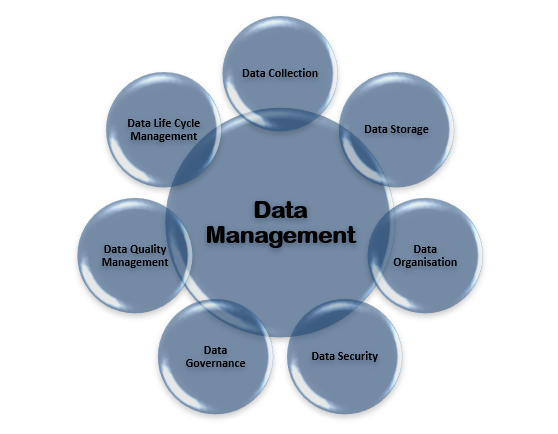
Military Applications of AI
Military applications of AI have the potential to impact the preparation and conduct of military operations across all domains and at a large scale. The AI systems can increasingly support and replace humans for military tasks as they are becoming faster, more accurate and able to process more information and higher levels of complexity. This may lead to increased speed of operation and better military decision making, ultimately offering the armed forces with performant AI, significant advantages. The military use of AI may even lead to another Revolution in Military Affairs.[8]In multidimensional battlefields, AI technologies can be utilised as sensors, planners and fighters or a combination thereof.[9] The latest campaigns between Russia- Ukraine, Armenia Azerbaijan, Israel – Hamas have seen rampant use of technology which has some form of AI at its core. The ability of AI systems to capture, store, process and analyse large quantum of visual and digital data in a fraction of a second has presented accurate and objective information to the military decision makers. They can thereafter utilize this information for any task ranging from moving reserves, predictive analysis, overcome logistical challenges, minimize civilian casualties, conduct war games, or train troops. In essence, the AI systems have reduced the cognitive load of the commanders in the battlefield thereby facilitating them in faster and better decision making. No wonder there is a race to develop more diverse, much faster, more accurate AI systems along with its supporting structures like Data centres, networks etc, amongst the militaries across the globe. Major military powers have recently adopted national strategies or similar documents related to military AI,.[10] indicating that states have realized the importance of military AI and guiding their efforts for developing, procuring and integrating AI systems into their armed forces.[11]
The US military is amongst the leading nations to embrace this new technology in a big way. The US Department of Defence (DoD) released its AI strategy in 2018. The key features of the strategy were maintaining superiority to enhance military capabilities, accelerating adoption of AI across all defence functions, partner with allies and lead in military ethics and safety. Towards this end, Joint Artificial Intelligence Centre (JAIC) was established with an aim to coordinate AI efforts across the DoD. In addition to the JAIC, other departments like the Defence Digital Service, Advancing Analytics Office and Project Maven, were also set up with an aim of working towards integrating AI with the Armed forces. In 2022, all these offices were merged and Chief Digital and Artificial Intelligence Office (CDAO) under the DoD was established which is now responsible for accelerating the adoption of data analytics and AI to generate advantage from boardroom to battlefield.[12] The new umbrella organization is working simultaneously with the industry and academia to bring newer technologies for DoD. On the other hand, China came up with a white paper on ‘Informatisation of Warfare in 2019’ which includes development of AI capabilities.[13] Russia too is actively financing research in both private and public sectors in AI.[14] Likewise NATO armies as well as Israel Defence Forces are also pursuing AI goals in their respective armed forces.
Today, AI technologies are being developed and extensively used in India in industry, business, healthcare, entertainment, politics and of course defence sectors. As per the NASSCOM India report ‘Unlocking Value from Data and AI: The India Opportunity’, it is predicted that Data and AI could add $450-500Bn to India’s GDP by 2025, representing up to 10 % of the $5 tn aspirations.[15] The Indian Armed Forces too, have embraced AI technologies in a big way. While the scope of AI is large, this paper focuses on creating Data centres for the services and utilizing AI tools to automate processing of intelligence, which would enhance situational awareness of the commanders on the battlefields.
Big Data and AI for Situational Awareness
A large quantum of data is being generated every day in various forms in the Armd Forces. There is an urgent need to have a centralized data storage facility and incorporating AI tools for intelligence processing for gainful utilisation of this data. Centralized data storage will ensure analysis of all the inputs into a single server / cloud based central data centre to generate a coherent intelligence picture of the battlefield. AI can then be incorporated to give actual recommendations based on duplicity and confirmation of the input and can also be used to task other sources for collaboration of the input if needed. This would overcome the problem of omission of information when being processed manually. Moreover, when the information would be time stamped and geo tagged, it could be automatically plotted in real time and shared as overlays through the common GIS platforms amongst the services. However, there are certain basic parameters which needs to be factored in while designing the data analytics architecture. The data analytics system should ensure integration of various platforms that is space, aerial, ground, sea and underwater platforms. The data should be stored in encrypted form and it should have adequate inbuilt redundancy in order to deal with hacking attempts. In order to ensure regular flow of data and information to and fro without any congestion and time delay, the system need to be built on spoke and hub model. The data storage centre should be able to meet the demands of various agencies connected to this hub both laterally as well as vertically.
The question which arises is, where should this data storage centre be located? Should we adopt a top down approach that is at theatre/national level or bottoms up approach that is tactical and operational level upwards? Setting up data centre requires heavy financial outlays apart from the requirement of power back up, cooling arrangements, security and of course skilled manpower. Therefore, central data centres may be setup at the national level with a backup location which is spatially separated. However, there is definitely a need to have data sub centres at the Corps / Command and equivalent level where region specific data can be stored and analysed. It is recommended that based on geography, the data can be stored at three or four sub centres in each theaterised commands. Each sub centres should work on hub and spoke basis wherein the user of that geographical area can hook onto respective sub centre for data access. In turn the sub centres would be interlinked and also connected to the central data centre through robust communication means. While each service has already made progress in terms of data storage and dissemination, an integrated approach driven by Headquarters Integrated Defence Staff at this stage would be prudent. This step addresses one part of the problem that is storage of data and retrieving the same by all users however, AI is still not being exploited in this case as the data is being fed and analysed manually.
The next recommended step is to install AI and train it to identify enemy’s pattern, equipment and weapon platforms. Once trained, the AI tools would assist in generating real time intelligence. Computer vision, libraries and machine learning algorithm can be incorporated into intelligence collection cells that would comb through manned / unmanned footage and automatically identify hostile activity for targeting. Also introduction of deep learning algorithms into the analysis process for satellite imagery could greatly enhance the rapidity of process. After identifying targets and developing the requisite tactical picture, AI can suggest means of communication with the weapon platforms to avoid getting intercepted with dynamic encryption to secure transmissions from hacking. In this capacity, AI is intended to automate the work of human analysts who currently spend hours sifting through videos for actionable information. AI can also offer a range of possible options for engagement of target based on merits and demerits of each decision through combat management system or fire control systems.[16]
Plan for Implementing AI & Big Data during Peace and Conflict
To implement AI and Big data analytics in the Indian Armed Forces, the initiative has to be undertaken at the apex level. A strategy should be clearly enunciated which should identify goals and objectives, broad areas for use of AI, scale of application, organizational re-structuring and ethical issues. It should also look into type of workforce required and the collaboration needed with Defence R & D, private technology companies and academia.[17] Concomitant to the AI strategy, data analytics framework needs to be adopted as the capacity building is time and resource intensive. Keeping in mind the sensitivity of military related data and security, it is recommended that Indian Armed Forces develop a standalone data analytics system. However, till the time such a system is developed, the existing technology with the corporate companies can be utilized with added security measures for the defence services. Presently, numerous firms have already developed AI tools to identify enemy weapon platforms however, since the data set is limited, the output is also not accurate. Therefore, there is a need to share more information to make the AI tools more accurate. The sharing of operational information remains a major challenge, hence, it is recommended that development of the customized AI tool for the defence forces should be undertaken. Adequate financial outlays should be earmarked along with the timelines to develop the AI tools. Once developed, the same can be installed at central as well as sub data centres. Certain projects which are already underway should explore the feasibility of incorporating the AI tools prior to mass production while other sensors already in service can be upgraded over a period of time.
Another facet which merits attention is the preparation of the defence intelligence agencies to culturally transform operations based on big data analytics. This would require cultivating a work force which is trained for the specialist job. Initially, there may be a need to hire data analysts and data scientists for manning and running the various central and sub data centres. There is a need to procure or indigenously develop the requisite hardware and software. Initially commercial off-the-shelf software on an experimental basis can be used and once own research and development (R&D) has acquired sufficient expertise, then we may graduate to indigenously developed software and hardware.[18]
Conclusion
AI and Big Data analytics are revolutionizing the method of war fighting. In about 10 years’ time, it is expected that there would be wide proliferation of these technologies in the armed forces across the world. A focused and concerted effort towards adopting AI and Big Data technology now would place us not only as a modern and technologically advanced military but also help us export ideas and products developed in-house to other countries. While we do not have the first mover advantage now, yet it is early days and the new technology is still evolving. Sky is the limit and we must seize this moment by educating ourselves, experimenting and implementing these technologies in our armed forces.
DISCLAIMER
The paper is author’s individual scholastic articulation and does not necessarily reflect the views of CENJOWS. The author certifies that the article is original in content, unpublished and it has not been submitted for publication/ web upload elsewhere and that the facts and figures quoted are duly referenced, as needed and are believed to be correct.
References
- Frontline, Mar 24, Disruption or Fantasy, pp 14
- http://www.fourmilab.ch/babbage/contents.html
- Deepak Khemani, A first Course in Artificial Intelligence, McGraw Hill, Chapter 1, pg 4
- https://plato.stanford.edu/entries/turing-test/
- Deepak Khemani, A first Course in Artificial Intelligence, McGraw Hill, Chapter 1, pp 15
- Ajinkya Jadhav, Leveraging Artificial Intelligence in the Indian Army, Manekshaw Papers No 95,2021, CLAWS, New Delhi, pp 4
- ‘Enhancing Edge Computing with Federated Learning and AI’, Open Source for you, Vol 12, Issue 5, Mar 2024, pp 59-63
- Jean Christophe Noel, ‘Will AI Revolutionise the Art of War?’,2018 Winter Issue Politique Etrangere, pp 159-170
- William A Branch, ‘Artificial Intelligence and Operational Level Planning: An Emergent Convergence’, 2018, School of Advanced Military Studies
- Maggie Gray and Amy Ertan, ‘Artificial Intelligence and Autonomy in the Military: An Overview of NATO Member States Strategies and Deployment’, NATO CCDCOE, 2021, pp 26-27
- Tobias Vestner, ‘From Strategy to Orders: Preparing and Conducting Military Operations with Artificial Intelligence’ Geneva Centre for Security Policy, 10 Jan 2-23, pp5-6
- Magaret Palmieri, Jim Mitre, ‘The Pentagon’s Chief Digital and Artificial Offficer: One year on’, RAND, Jul 2023
- ‘National Defence In the new Era’, https://www.andrewericks.com/2019/07 accessed on 04 Jun 24
- Tobias Vestner, ‘From Strategy to Orders: Preparing and Conducting Military Operations with Artificial Intelligence’ Geneva Centre for Security Policy, 10 Jan 2-23, pp5-6
- NASSCOM report available at www.nasscom.in , accessed on 05 Jun 2024
- Manish Kumar Rai, ‘Employment of AI and Big data for optimum utilisation of Intelligence, Surveillance, Reconnaissance and Targeting at Military Operational Level’, pp 46-47
- Deependra Singh Hooda, Implementing Artificial Intelligence in the Indian Miliary, Delhi Policy Group, Feb 16, 2023
- Manish Kumar Rai, ‘Employment of AI and Big data for optimum utilization of Intelligence, Surveillance, Reconnaissance and Targeting at Military Operational Level’, pp 80


